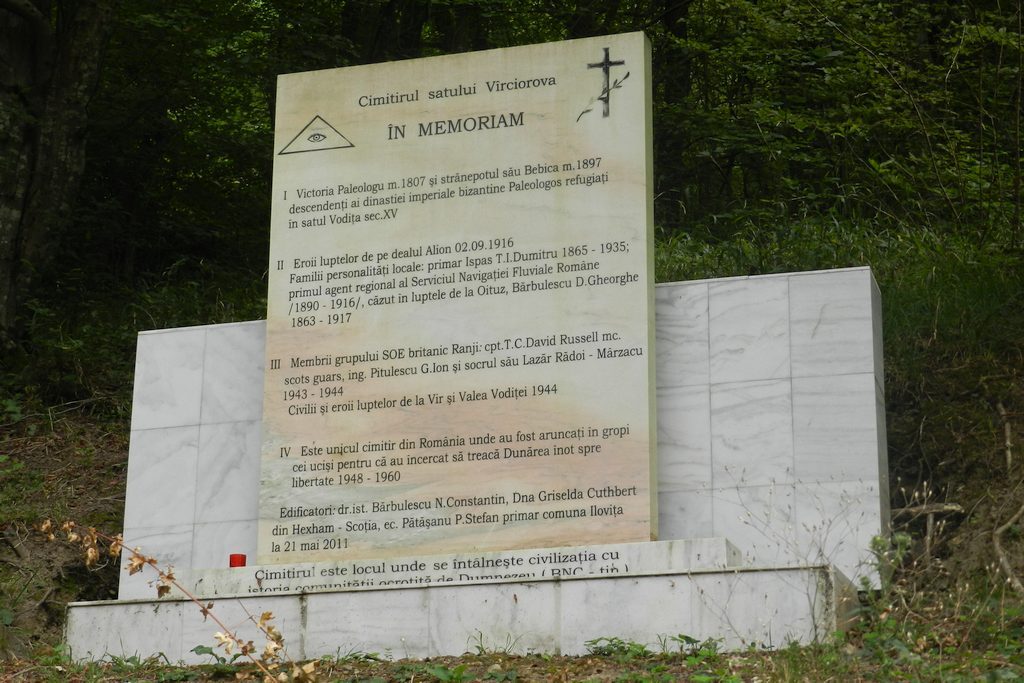

The cemetery Vîrciorova is dedicated to Victoria Paleologu (deceased in 1807) and to his grandson Bebica (deceased at 1897), descendants of the imperial Byzantine dynasty Paleologus refugees from the village Vodița. in the XVth century.
Also, the monument is dedicated to the heroes from the fights from the hill Alion from the 2nd of September 1916, to the members of the British group SOE Ranji, civilians and heroes of the fights from Vir and Valea Vodiței from 1944.
This is the only cemetery from Romania where there were thrown in graves the people killed because they tried to pass the Danube swimming towards the freedom in the period of the communism 1948 – 1960.
Drobeta – Turnu Severin, frontier city with the former Socialist Federal Republic Yugoslavia, attracted as a magnet throughout the years the Romanians who wanted to escape the poverty from the country. From here, they left towards the states of the world sports people, artists, doctors, engineers, but also simple people, disgusted with the communist regime. Even on the border of the Danube, from the district from Severin Schela Cladovei, you could see the barrier from Porțile de Fier I which was only partially lighted, namely on the Serbian part. On the Romanian border there was obscurity, because of the fact that they wanted to economize the electrical energy.
On the place on which the Danube channel was narrow, around the Cazanele Mari and around the Cazanele Mici, was the best place for leaving the country. In Drobeta – Turnu Severin there was passed the Danube to the Serbians towards the Naval Building Yard or from the area of the Abattoir, in the proximity of the Șimian Island or in front of the outside districts of the sketes – Schela Cladovei and Gura Văii -, in the place where there also were guides. The security men who were infiltrated in the area had among other requests of verifying to the quick each new employee at the few economical unities from here. Only the fishermen were allowed to stay on the border, but only if they had the approval from the rangers. Another “passing” point was also the Balota Hill, situated at a few kilometers from Severin. The fugitives were descending the hill until the Danube in the frontager localities, Hinova and Ostrovul Corbului, where the river was narrower and it could be easily passed, especially during the summer. Another method of arriving at the Serbians, which managed to give a bad time to the authorities from that period, was the one of using the motor-nave which performed regular courses of passengers between Ostrovul Mare and Moldova Veche. When the nave reached the territorial waters of the Serbian state, the fugitives simply jumped in the water and swam until the border.
If they succeeded in passing the Danube, the people with superior education, the well professionally prepared, weren’t returned, but sent in a camp at Padinska Schela, in the proximity of Belgrade. Here there were kept two – three months until they drafted the papers for immigrating in America, Australia, Canada, Germany, France and Austria.
